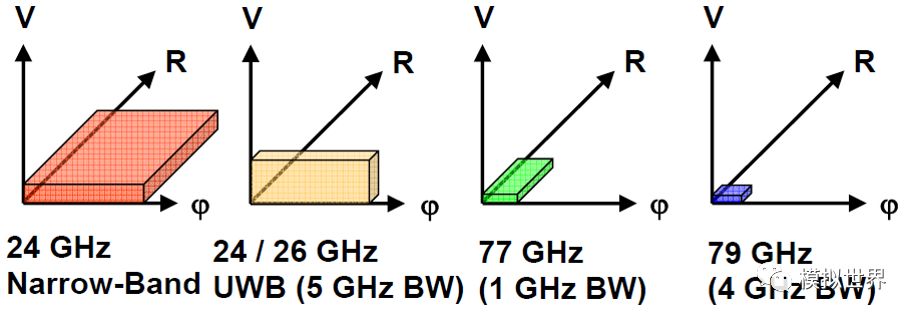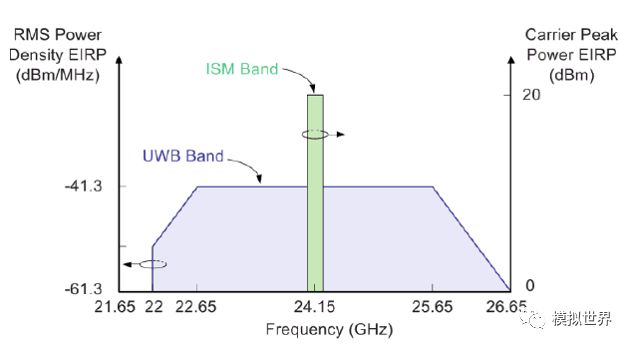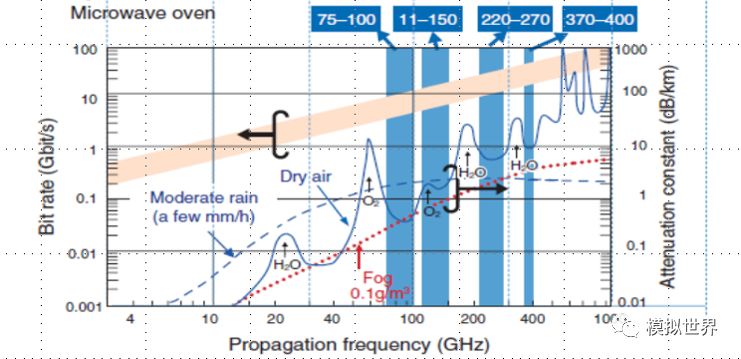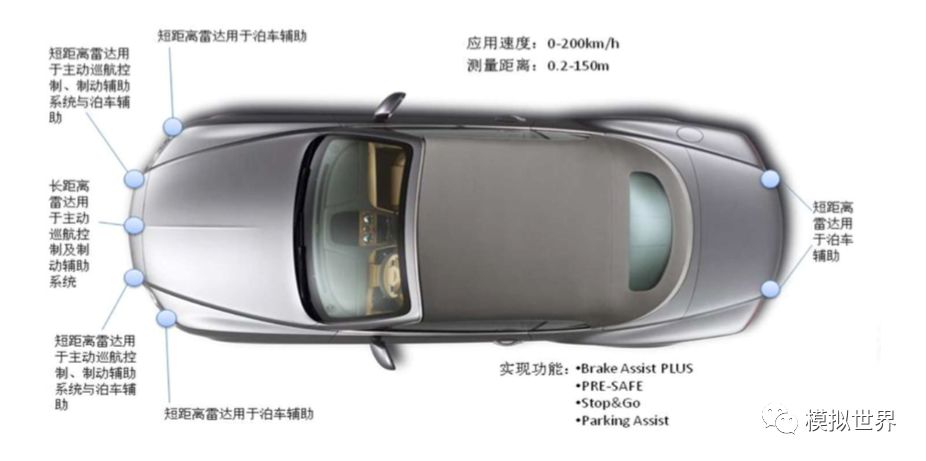Ultrasonic radars, infrared radars, and lidars all use echo detection and compare with the transmitted signal to obtain the difference in pulse or phase, thereby calculating the time difference between the transmitted and received signals. Then respectively correspond to the propagation speed of ultrasonic, infrared, and laser in the air, and calculate the distance and relative speed to the obstacle. Compared with optical and infrared radars, millimeter-wave radar is not affected by the shape and color of the target object, and is not affected by atmospheric turbulence compared with ultrasonic, so it has stable detection performance and good environmental adaptability. Affected by changes in the weather and the external environment, rain, snow, dust, and sunlight have no interference; the Doppler shift is large, and the accuracy of the relative velocity measurement is improved.
The vehicle's active anti-collision control system based on multi-sensor information fusion is to use multi-source information fusion technology to identify the distance and speed of the vehicle in front of the vehicle based on the target information in front of the vehicle and the state information of the vehicle received by multiple sensors Status information, and estimate the risk of collision. Obviously, the vehicle active anti-collision control system based on multi-sensor information fusion is an active anti-collision and anti-lock car safety system. It enables optimal control of reaction time, distance, and speed. Reducing the driver's burden and judgment errors will play an important role in improving traffic safety and is the basis for realizing auto-driving.
Among the automobile collision avoidance sensors, according to the working principle and working process, they are divided into ultrasonic radar, infrared radar, laser radar and millimeter wave radar. Among the first three types of radars, the echo is detected and compared with the transmitted signal to obtain the difference in pulse or phase to calculate the time difference between the transmitted and received signals. Then respectively correspond to the propagation speed of ultrasonic, infrared, and laser in the air, and calculate the distance and relative speed to the obstacle. Although these three types of anti-collision radars designed by the sound and light principle are simple in structure and low in price, they are susceptible to interference from severe weather conditions and cannot ensure the accuracy of ranging. Millimeter-wave radar shows its unique advantages. Compared with optical and infrared radars, it is not interfered by the shape and color of the target object, and compared with ultrasonic, it is not affected by atmospheric turbulence, so it has stable detection performance; good environmental adaptability . Affected by changes in the weather and the external environment, rain, snow, dust, and sunlight have no interference; the Doppler shift is large, and the accuracy of the relative velocity measurement is improved.
Below we will introduce the mainstream sensor technology step by step. At present, the most concerned sensing method is the radar system that uses millimeter waves for measurement. Today we will introduce millimeter wave radar technology.
Radar is a device that uses radio echo to detect the direction and distance of a target. Radar is the transliteration of the English word Radar, which is abbreviated from the prefix of Radio Detection And Ranging, which means radio direction detection and ranging. The world became familiar with radar when the British air battle in 1940, 700 British fighters carrying radar defeated 2,000 German bombers, thus rewriting history. After World War II, radar began to have many peaceful uses. In terms of weather forecasting, it can be used to detect storms; in terms of aircraft and ship navigation safety, it can help pilots and airport traffic control personnel to complete their tasks more effectively.
Millimeter wave is an electromagnetic wave that works in the millimeter wave band, with a working frequency of 30-100 GHz and a wavelength of 1-10 mm. The wavelength of millimeter wave is between microwave and centimeter wave, so millimeter wave radar has some advantages of microwave radar and photoelectric radar. Vehicle millimeter wave radars mainly include 24GHz and 77GHz millimeter wave radars.



Compared with the centimeter waveguide seeker, the millimeter waveguide seeker has the characteristics of small size, light weight and high spatial resolution. Compared with infrared, laser, TV and other optical seekers, the millimeter waveguide seeker has a strong ability to penetrate fog, smoke, and dust, and has the characteristics of all-weather (except heavy rain) all day. Millimeter-wave radar can work around the clock, not affected by weather conditions, and the harsh climate environment is one of the main causes of traffic accidents. Compared with light waves, millimeter waves use atmospheric windows (when millimeter waves and submillimeter waves propagate in the atmosphere, some of the attenuation due to the resonance absorption of gas molecules is a minimum value). And heat radiation source has little effect.
The main limitations of millimeter wave applications in radar are: the attenuation of high humidity environments such as rain, fog and wet snow, and the influence of high-power devices and insertion loss will reduce the detection range of millimeter wave radar; the penetration ability of trees is poor, compared with Microwave has low penetration into dense trees.

Like most microwave radars, millimeter wave has the concept of beam, that is, the emitted electromagnetic wave is a cone-shaped beam, rather than a line like a laser. This is because the antenna in this band mainly uses electromagnetic radiation instead of light particle emission as the main method. In this regard, radar and ultrasound are the same, and the way of this beam leads to its advantages and disadvantages. Advantages and reliability, because the reflective surface is large, but the disadvantage is that the resolution is not high. Millimeter-wave radar can perform detection, ranging, speed measurement and azimuth measurement of the target.
Speaking of the principle of distance measurement, it is actually simple, all based on the TOF (Time Of Flight) principle. The working principle of radar is very similar to the reflection of sound waves. The only difference is that the wave used is a radio wave with a high frequency, not a sound wave. The transmitter of the radar is equivalent to the vocal cord that emits the shouting sound, and it can emit pulses similar to the shouting sound. The pointing antenna of the radar is like a shouting microphone, so that the energy of the electric pulse can be concentrated and emitted in a certain direction. The function of the receiver is similar to that of the human ear to receive the echo of the electric pulse sent by the radar transmitter.
Millimeter-wave radar speed measurement is the same as ordinary radar. There are two methods, one is based on the principle of Dopler Effect. The so-called Doppler effect is that when vibration sources such as sound, light and radio waves move with the observer at a relative speed V, the frequency of vibration received by the observer is different from the frequency emitted by the vibration source. Because this phenomenon was first discovered by Austrian scientist Doppler, it is called the Doppler effect. In other words, when the emitted electromagnetic wave and the detected target move relative to each other, the frequency of the echo will be different from the frequency of the emitted wave.
When the target approaches the radar antenna, the reflected signal frequency will be higher than the transmitter frequency; conversely, when the target moves away from the antenna, the reflected signal frequency will be lower than the transmitter frequency. The frequency change formed by the Doppler effect is called the Doppler shift, which is proportional to the relative speed V and inversely proportional to the frequency of vibration. In this way, by detecting this frequency difference, the moving speed of the target relative to the radar can be measured, that is, the relative speed of the target and the radar. According to the time difference between transmitting pulse and receiving, the distance of the target can be measured. At the same time, the frequency filtering method is used to detect the Doppler frequency spectrum of the target and filter the spectrum of interference clutter, so that the radar can distinguish the target signal from the strong clutter. Therefore, pulse Doppler radar has stronger anti-clutter interference ability than ordinary radar, and can detect moving targets hidden in the background. Pulse Doppler radar was successfully developed and put into use in the 1960s.
Doppler radar is a radar that uses the Doppler effect for positioning, speed measurement, and ranging. But this method cannot detect the tangential velocity. The second method is to obtain the velocity by tracking the position and performing differentiation.
For vehicle safety, the most important basis for judging is the relative distance and relative speed information between two vehicles. If the distance of a high-speed vehicle is too close, it is easy to cause a rear-end collision. Therefore, the commonly used collision avoidance systems take the measurement of the relative distance between vehicles as the main detection task.
The millimeter wave radar currently on the market has two specifications: 24GHz and 77GHz. Among them, the 77GHz millimeter-wave radar is mainly used in the front of the car to detect objects at medium and long distances, and the 24GHz millimeter-wave radar is generally installed on the side and rear of the car for blind spot detection and auxiliary parking systems.

The working system of radar is mainly divided into pulse mode and continuous wave mode. Continuous wave (ContinuousWave: CW) radar refers to the transmission of continuous wave signals, mainly used to measure the speed of the target. If you need to measure the distance of the target at the same time, you need to modulate the transmitted signal, for example, perform periodic frequency modulation on a continuous sine wave signal. The waveform emitted by pulse radar is rectangular pulse, which works in a certain or staggered repetitive cycle.
Modern pulse radar technology is quite mature, but in principle it is impossible to solve the ambiguity of distance and velocity measurement at the same time. This requires the use of multiple pulse frequency (PRF) methods to resolve the ambiguity of distance and velocity. The data transmission rate of the system is reduced, and it is not conducive to the improvement of the signal-to-noise ratio (SNR). However, continuous wave radar, such as a continuous wave radar with a pseudo code or random code 0~π phase modulation, can well solve the problem of the blind area of ​​pulse radar, and has good speed and range resolution.
At the same time, in short-range radar systems or secondary radars, continuous wave radar has unique advantages compared to pulsed radar: especially with the development of microwave solid-state devices in the world today, the use of continuous wave radar can make radar simpler. The reason The transmitter of the continuous wave radar does not need very high voltage, does not produce high-voltage ignition, and the modulation signal can be diversified, which is beneficial to the improvement of the transmitter under the same volume and weight. In this way, continuous wave radar can achieve small size, light weight, easy implementation of transmitter and low feeder loss.
yanzheng 20240111 hu la
Bossgoo(China)Tecgnology.(Bossgoo(China)Tecgnology) , https://www.cn-gangdao.com